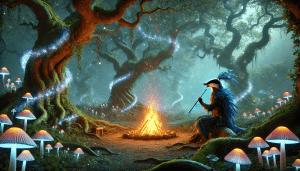In the folds of time, among ancestral whispers and traditions preserved over the centuries, we find one of the most intriguing practices of the human experience: conjuring. More than mere words thrown to the wind, they represent the bridge between the mundane and the extraordinary, between desire and its manifestation.
What are Conjures?
Conjures are manifestations of the power of words and intent, materialized through specific phrases, carefully crafted rituals or ancient mystical practices. They are tools that, according to belief, allow you to invoke magical forces, bring about changes in reality or achieve goals that transcend the limits of everyday life.
In essence, a conjure is a key that opens doors between the possible and the impossible, a bridge between what is and what could be. It embodies the belief that, through the precise combination of words, gestures and intentions, we can influence the invisible currents that weave the tapestry of reality.
On this journey through the mystical and the extraordinary, we'll explore the many facets of conjuring. We'll delve into their historical roots, uncovering how different cultures have developed and used these practices over the millennia. We'll examine the various types of conjuring, from ancient protection spells to modern manifestation practices.
Our path will take us through:
- The ancestral origins of conjuring in different world traditions;
- The fundamental elements that make up a conjure;
- The categories and purposes of conjuring;
- The role of conjuring in culture and spirituality;
- Modern interpretations and contemporary applications of these ancient practices.
Get ready for a journey through time and mystery, where every word carries the power of transformation and every gesture can be the key to a new understanding of the extraordinary.
Index
The History of Conjures: A Journey Through the Ages
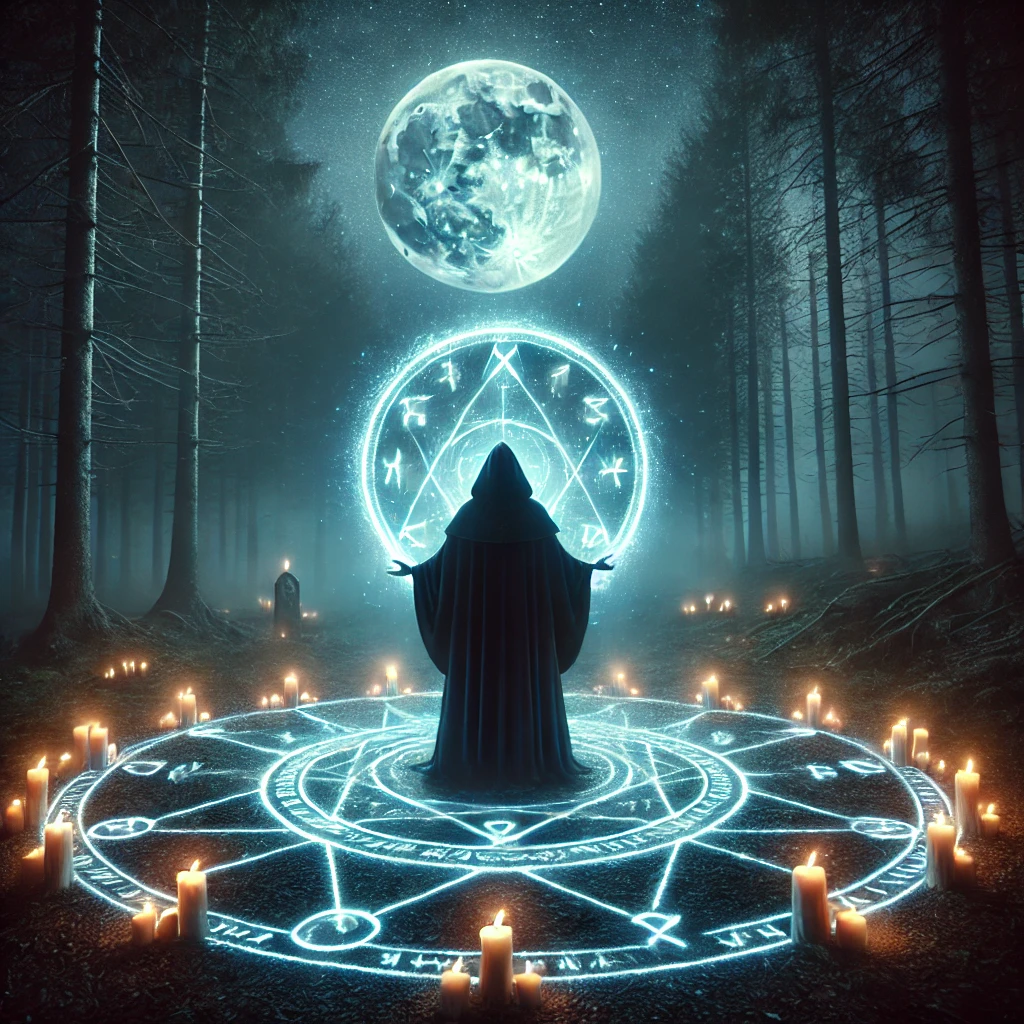
Ancient Origins: The First Whispers of Power
In the golden sands of Ancient Egypt, among papyri yellowed by time, are recorded some of the first conjures known to mankind. The Texts from the Sarcophagi and Book of the Dead were not just guides to the afterlife - they contained conjures designed to protect, transform and guide souls through the trials of the underworld.
In Mesopotamia, clay tablets engraved in cuneiform script preserved incantations used by Babylonian priests. These practices included warding off demons, curing illnesses and attracting prosperity. The tablets Makluan Assyrian series, contain some of the oldest protective conjurations ever discovered.
Ancient Greece brought us the Greek Magical PapyriAn extraordinary collection of conjurations that mixed Egyptian, Greek and Persian traditions. In Rome, the defixions - small lead tablets with conjurations inscribed on them - were buried in temples and cemeteries, bearing supplications to the gods for justice, love or revenge.
The Age of Grimoires: Middle Ages and Renaissance
During the Middle Ages, conjurers took refuge in the shadows and in monasteries, surviving in coded manuscripts and secret languages. O Picatrixtranslated from Arabic into Latin in the 13th century, it became one of the most influential grimoires of its time, combining astrology, alchemy and ritual magic.
O Book of St. CyprianShrouded in the mystery of Iberian folklore, he brought a fascinating combination of Christianity and popular magic. His conjurations, which ranged from spiritual protection to communication with spirits, influenced magical practices throughout the Portuguese-speaking world.
The Minor Key of Solomon and Goetia emerged as the fundamental texts of European ceremonial magic, establishing complex systems of conjuring and rituals. Even under the strict scrutiny of the Church, this knowledge was preserved and transmitted through occult codes and symbologies.
The World Fabric of Conjures: Diverse Traditions
Around the world, different cultures have woven their own conjuring traditions.
In the Americas, shamans and shamans created sacred songs as a form of healing, protection and connection with the spirits of nature. In Brazil, rezadores perpetuate these practices in benzeduras and healing prayers, keeping ancestral traditions alive.
In Haiti and New Orleans, Voodoo developed a unique system of conjuring, combining African, Catholic and indigenous elements. The gris-gris - small amulets containing written spells - have become powerful symbols of this practice.
In the Nordic tradition, runes were not only a writing system, but also instruments of magic. Each symbol carried a specific energy that could be activated through the galdrs - magical songs with transformative power.
In the East, the Kuji-in Japanese, based on gestures (mudras) and mantras, flourished in the esoteric traditions of Buddhism and Shintoism. In China, the fu - calligraphic talismans containing conjurations - were created by Taoist masters and used for various mystical purposes, a practice that still survives.
In medieval England, witches cunning developed a unique tradition of conjuring, combining Old English incantations with the use of medicinal herbs. This form of folk magic survives to this day in some neo-pagan practices.
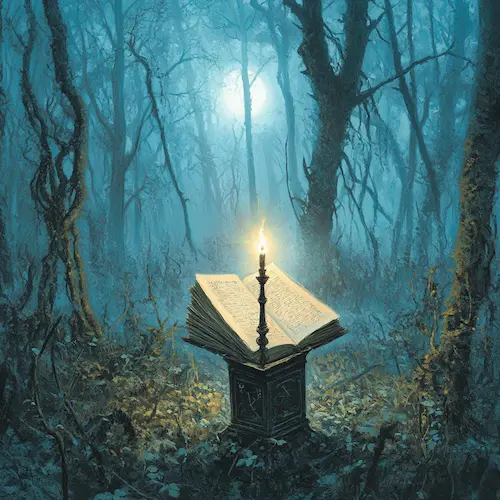
Types of Conjuring: The Art in Practice
Each conjure is rooted in specific traditions and is usually accompanied by rituals involving the use of natural elements, symbolism and appropriate moments. It is essential to remember that the effectiveness of a conjure lies not only in the words, but also in the intention, careful preparation and respect for the spiritual principles that guide its practice.
Protection Conjures
Created to establish a mystical shield against negative energies and dangers, protection spells are among the oldest and most universal.
Historical example: The Salt Circle
One of the best-known protection spells in the European tradition involves drawing a circle with sea salt while reciting:
"With this pure and consecrated salt,
I draw this sacred circle.
Let no evil enter here,
Let only light be concentrated.
As I wish, so it is done."
Healing Conjures
Focused on restoring vital balance, healing spells often combine natural elements with words of power.
Traditional example: Benzedura of the Sun and Moon
This incantation, which comes from the Portuguese-Brazilian tradition, is used to relieve ailments of the body and soul:
"With the rays of the warming sun,
With the light of the moon,
With the stars that shine,
That all evil is evicted from here.
Just as the sun rises and sets,
May this pain also go away.
As I ask, so it shall be."
Love Conjures
Intended to attract or strengthen relationships, these conjures are traditionally performed during specific phases of the moon.
Ancient Roman example: The Charm of the Rose
Taken from ancient Roman papyri, this conjure used red rose petals:
"Venus, goddess of true love,
For these rose petals I call you first.
May love bloom like this flower,
Bringing warmth into my life.
Per amore, per amorem, per Venus."
Prosperity Conjures
These conjures aim to attract abundance and success and are often performed with specific herbs and during the crescent phase of the moon.
Chinese example: The Call of Abundance
Adapted from ancient Taoist rituals, this conjure traditionally uses copper coins and incense:
"May the fortune of the East blow like the wind,
May the prosperity of the South shine like the sun,
May the abundance of the West flow like a river,
May the wealth of the North be as firm as a mountain.
May all directions bring infinite blessings."
Summoning Conjures
Among the most complex and revered, invocation spells are used to establish contact with entities, spirits or deities. Traditionally, they require extensive preparation and specific conditions.
Ancient Greek example: The Call of Hermes
Found in the Greek Magical Papyri, this conjure was performed at dusk, with offerings of incense:
"Hermes, messenger between worlds,
Guardian of crossroads and deep paths,
For your winged feet and your sacred caduceus,
I ask you to cross the veil between the worlds.
May your presence be manifested in this drawn circle,
As above, so below,
As in the ethereal, so in the earthly.
Come in peace and wisdom.
Khaire Hermes!"
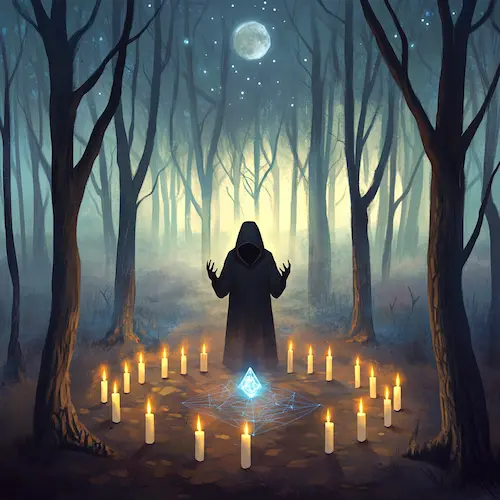
The Fundamental Elements of Conjures
A truly powerful conjure is one in which all these elements - words, rituals and intention - merge in perfect harmony, like instruments in a cosmic orchestra. Each component contributes its own frequency, creating a symphony of transformation that transcends the mundane and reaches the extraordinary.
The Power of the Holy Word
In mystical traditions around the world, words are much more than just sounds - they are keys that unlock doors between realities. In Sanskrit, "Vāc" means both "word" and "divine creative power", reflecting the belief that speech possesses a transformative force.
Each syllable of a conjure is carefully chosen not only for its meaning, but also for its vibration and resonance. In mystical Judaism, the 22 letters of the Hebrew alphabet are believed to be instruments of divine creation. In Siberian shamanism, specific guttural sounds from chants are considered capable of crossing the barriers between worlds.
Some traditions state that certain words should only be spoken at specific times or by initiated practitioners. A classic example is "Abracadabra", which derives from the Aramaic "Avra Kehdabra" - translated as "I create as I speak".
The Symphony of Ritual Elements
The physical aspect of conjuring is a carefully choreographed dance with symbolic elements. Each item used in the ritual has a profound meaning and helps to amplify the energy generated.
Candles:
The colors of the candles carry specific meanings that influence the energy of the conjure:
- White: Purification and protection.
- Red: Passion and energy.
- Green: Prosperity and healing.
- Purple: Spiritual power.
- Blue: Peace and communication.
Crystals and stones:
- Rose Quartz: Love and harmony.
- Amethyst: Spiritual protection.
- Citrine: Prosperity.
- Black Tourmaline: Protection against negative energies.
Sacred Herbs:
- Rue: Protection.
- Rosemary: Purification.
- Lavender: Love and peace.
- Laurel: Mental clarity and success.
Symbols and Circles:
Drawing a magic circle clockwise creates a sacred space where energies can be concentrated and directed. Symbols such as pentagrams, hexagrams and other mystical icons serve as focal points to channel and amplify the energy of the conjure.
The Power of Intention
The most powerful element of any conjure lies in the mind and heart of the practitioner. Intention is the spark that ignites the flame of mystical power, while focus is the fuel that keeps it burning.
To maximize the power of intention:
- Clarity of purpose: Have a clear and well-defined objective.
- Aligned Emotional State: Your emotions must vibrate in harmony with the purpose of the conjure.
- Total Concentration: Be completely present at the time of the ritual.
- Visualization: Vividly imagine the desired result, as if it were already happening.
- Conviction: Genuinely believe in the power of the ritual and its ability to fulfill the intention.
The Hermetic tradition teaches that "energy follows thought" - the more focused the mind, the more powerful the conjure. Similarly, Zen masters speak of the concept of "mushin" (empty mind), a state of total concentration where there is no separation between the practitioner and the practice.
Conjuring and Praying: Different Paths of Spiritual Power
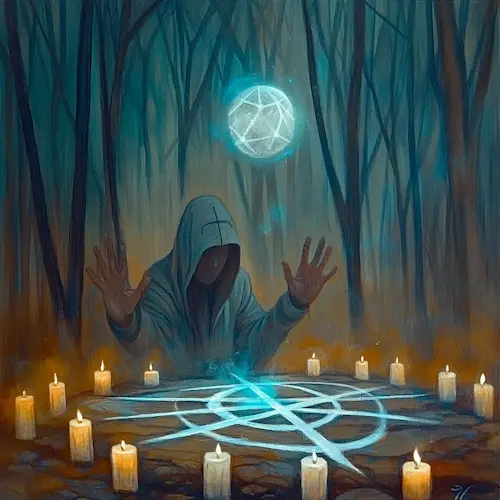
Understanding Differences
In the vast tapestry of spiritual practices, conjuring and praying are distinct threads which, although they may seem similar at first glance, weave fundamentally different patterns. Both carry spiritual power, but do so in unique ways, reflecting varied approaches to interacting with the divine or the forces of the universe.
The Nature of Conjuring
A conjure is a tool for direct transformation, a magical key designed to open specific doors in reality. When a practitioner performs a conjure, they take on the role of active agent of change, channeling words of power, gestures and rituals to manifest their will in the world.
In essence, the conjure states:
"By this power, it shall be done."
Example of a Protection Conjure:
"Through this circle of salt and light,
By my manifest will,
Let a barrier be erected here,
Let no evil remain here."
The Essence of Prayer
Prayer, on the other hand, is an act of connection and surrender to a higher divine force. It is a spiritual dialog, a bridge between the human and the divine, where the practitioner seeks guidance, protection or blessings through humility and devotion.
In essence, the prayer expresses:
"If it is your will, so be it."
Example of a Prayer of Protection:
"Lord, in your infinite goodness,
I ask for your protection and guidance.
May your light illuminate my path,
And may your will be done in my life."
Different purposes
Conjures:
- They seek specific and tangible results.
- They aim to manipulate natural energies and forces.
- They focus on the manifestation of the practitioner's will.
- They are looking for immediate or short-term effects.
Prayers:
- They seek spiritual connection and harmony.
- They aim to align themselves with God's will.
- They focus on devotion and surrender.
- They cultivate an ongoing relationship with the divine.
Methods and Practices
No Conjuro:
- Elaborate and carefully planned rituals.
- Use of tools and mystical elements (candles, crystals, herbs).
- Words of power chosen for their vibration and intention.
- Precise gestures and movements that amplify the energetic impact.
- Performed at specific times (phases of the moon, planetary timetables).
In prayer:
- Simplicity and spontaneity in execution.
- Focus on sincerity and the intention of the heart.
- Words that flow naturally and genuinely.
- It can be done at any time and in any place.
- It does not require external elements for its realization.
Cultural Contexts
Conjures are prevalent in:
- Ancient and modern pagan traditions.
- Shamanic practices.
- Ceremonial magic systems.
- Traditional and contemporary witchcraft.
Prayers are characteristic of:
- Monotheistic religions (Christianity, Islam, Judaism).
- Hindu devotional practices.
- Buddhist rituals.
- Organized spiritual traditions.
The Bridge Between Worlds
In some traditions, such as Brazilian popular Catholicism, there are practices that integrate elements of both paths. Benzeduras, for example, combine devotional aspects of prayers with rituals reminiscent of conjuring, creating a unique form of spiritual practice.
Final Reflection
While conjuring is an affirmation of personal power and the ability to directly influence the forces of the universe, praying is an act of recognition and alignment with a greater force. Both are valid ways of accessing the sacred, offering distinct forms of transformation and spiritual growth.
Regardless of the path chosen, both conjures and prayers remind us of the connection between the human and the transcendent, showing that there are infinite ways to interact with mystery and the divine.
How Conjurors Work: Between Mysticism and Science
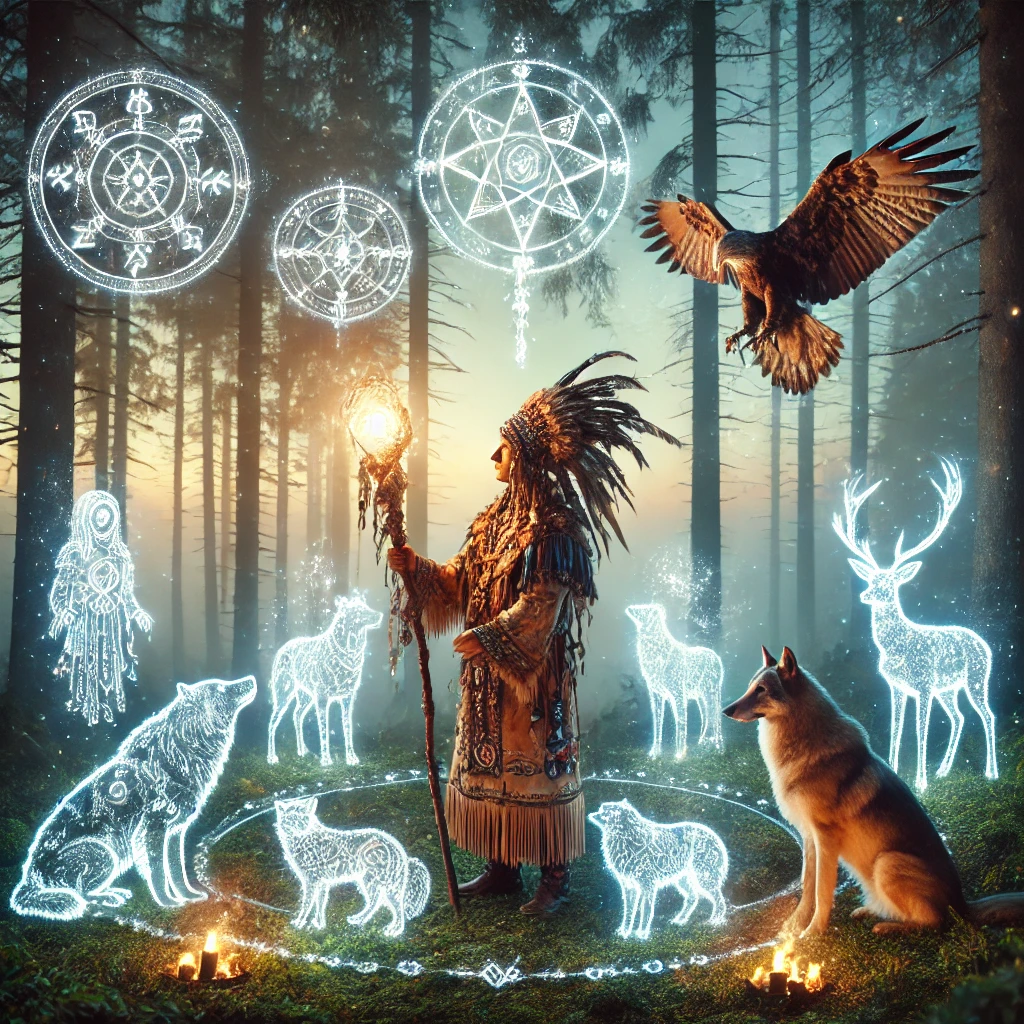
The Magical and Spiritual Perspective
In the traditional view of mystical practitioners, conjurations function as tools for consciously manipulating the subtle energies that permeate the universe. According to this perspective:
- There is an invisible web of energy that connects all things.
- The words and gestures made during conjuring create "waves" in this energy web.
- Symbols and ritual objects act as amplifiers of these energies.
- The moon and other celestial bodies influence the flow and intensity of these forces.
- The practitioner serves as a channel to direct these energies in an intentional way.
The ancient Egyptians called this force "heka", while the Chinese called it "qi" and the Indians "prana". Although the names vary, the essence is the same: a vital energy which, according to these traditions, can be shaped and directed through rituals and conjurations.
The Power of the Mind: The Psychological Perspective
Modern psychology offers another interesting approach, suggesting that conjures can impact our reality by directly influencing our mind and behavior.
Mental reprogramming:
- Rituals help to restructure mental patterns, creating new neural pathways.
- The repetition of words and gestures reinforces beliefs and intentions.
- Symbols and metaphors present in rituals speak directly to the subconscious.
- Altered states of consciousness, induced by rituals, allow greater access to the unconscious.
The Placebo Effect and Beyond:
- Belief in the power of conjure can activate the body's natural healing mechanisms.
- Positive expectations generated by the ritual can influence concrete results.
- The ritual offers a sense of control in times of uncertainty.
- Regular practice reduces anxiety and promotes emotional well-being.
The Science of Rituals
Recent research in neuroscience and cognitive psychology reveals how rituals can impact the brain and body in measurable ways.
Neurological changes:
- EEG studies show that rituals can induce specific brain states.
- Rhythmic repetitions synchronize brain waves, promoting calm and focus.
- Ritualistic gestures increase the production of neurotransmitters linked to well-being, such as dopamine and serotonin.
- Intense focus activates areas of the brain related to concentration and creativity.
Physiological impacts:
- Reduced levels of cortisol, the stress hormone.
- Regulation of heart rate and breathing.
- Strengthening the immune system.
- Improved sleep patterns and relaxation.
Behavioral Studies:
Research carried out at institutions such as Harvard and Oxford shows that:
- Rituals increase the feeling of control in uncertain situations.
- Regular ritual practices improve performance in complex tasks.
- Collective rituals strengthen social bonds and promote a sense of community.
- Ritualistic repetition increases concentration and mental discipline.
The Convergence of Perspectives
The most fascinating thing is how these different visions - mystical and scientific - can complement each other. What the ancients called "vital energy" can manifest itself through observable neurological and psychological processes. The magic of conjuring perhaps lies in its ability to access powerful natural mechanisms of transformation, present in both our minds and bodies.
Whether through the manipulation of subtle energies or the activation of neuropsychological processes, conjurations have demonstrated a significant impact on the human experience over the centuries. Perhaps this is because they touch on fundamental aspects of our nature as conscious, creative and energetic beings.
Conjuring in the Digital Age: Tradition Meets Modernity
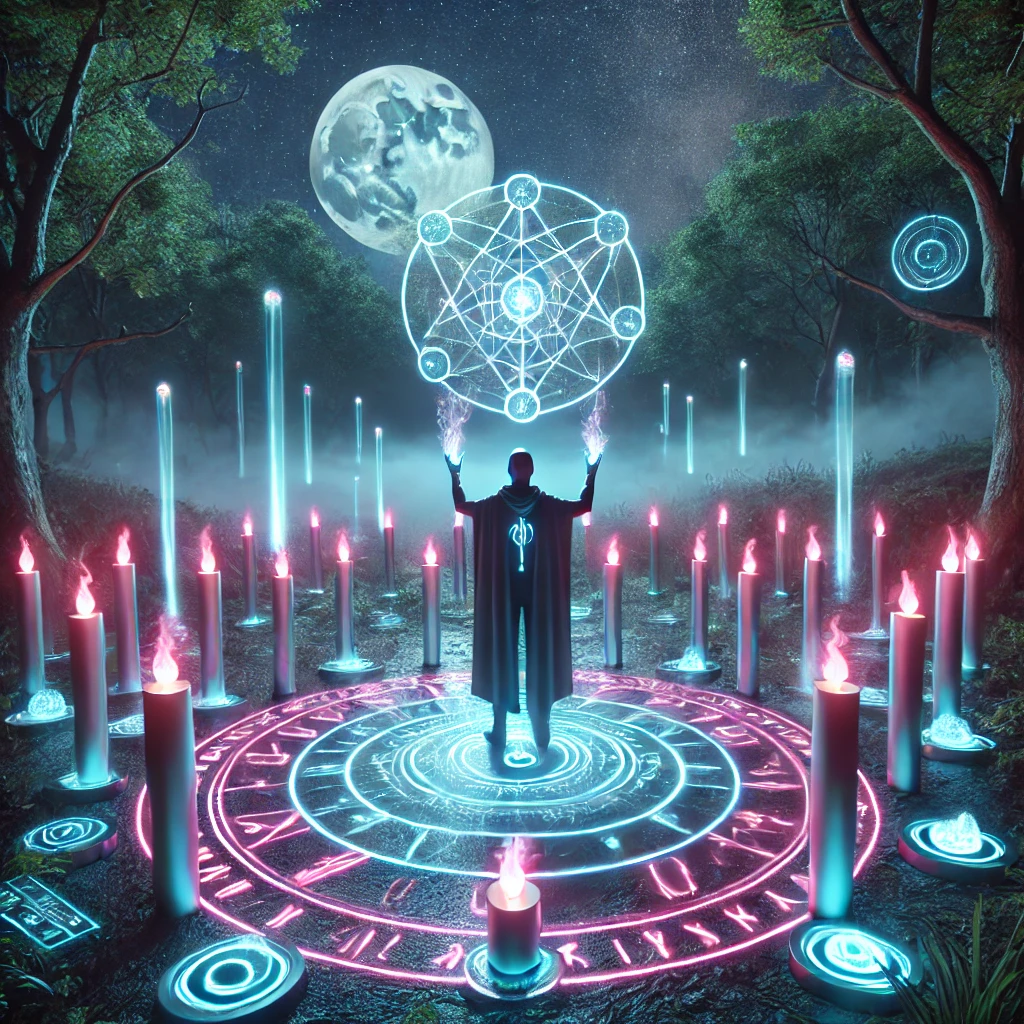
The New Face of Witchcraft
The 21st century has witnessed a remarkable revival of mystical practices, adapted to the sensibilities and realities of the modern age.
Wicca and Neopaganism:
- Wicca, founded by Gerald Gardner in the 1950s, brought a new approach to conjuring and ancient rituals.
- Ecological and feminist practices are integrated into traditional rituals, promoting a connection with nature.
- The natural cycles are celebrated through the Sabbats (solstices and equinoxes) and Esbats (phases of the moon).
- Emphasis on personal responsibility and the ethical principle "Do no harm".
Modern Witchcraft:
- "Solitary witches" adapt rituals for individual practices, often in urban environments.
- Elements of Jungian psychology and mindfulness techniques are incorporated.
- Focus on personal empowerment, self-knowledge and inner healing.
- A mixture of different cultural traditions, resulting in an eclectic and diverse magical practice.
Conjures in Pop Culture
Magic and conjuring have earned a special place in the contemporary popular imagination, inspiring generations through various media.
In Literature and Cinema:
- Harry Potter introduced spells and incantations to a generation, popularizing magic in mainstream culture.
- Sabrina, The Sorcerer's Apprentice and its modern version have transformed the witch into a contemporary figure.
- Charmed introduced the concept of rhymed conjures and family rituals in a modern context.
- American Horror Story: Coven explored themes of witchcraft with a dark and contemporary approach.
In Games and Interactive Media:
- RPGs such as Dragon Age e Skyrim present elaborate systems of magic and sorcery.
- Tarot apps and digital oracles give you quick access to mystical practices on your smartphone.
- Online games offer the opportunity to experiment with rituals and magic systems in virtual worlds.
- Virtual reality is being explored to create immersive mystical experiences.
The Digital Kingdom of Conjures
The internet has revolutionized the way people access and share knowledge about conjuring and spiritual practices.
Social media:
- #WitchTok on TikTok has popularized short videos with practical rituals and magical tips.
- On Instagram, "aesthetic witchcraft" combines spirituality with altars and stylized rituals.
- YouTube channels offer detailed tutorials on magical practices.
- Pinterest works as a digital repository for grimoires and inspirations.
Online Communities:
- Specialized forums allow practitioners to exchange experiences and knowledge.
- Facebook and Discord groups create spaces for collective rituals and in-depth discussions.
- Blogs and websites offer free resources for beginners and those who want to delve deeper.
Technology and Tradition:
- Moon tracking apps help you plan rituals in line with the phases of the moon.
- E-books facilitate access to old and new grimoires.
- WhatsApp groups share daily inspirations and quick conjures.
- Livestreams allow participation in live rituals, connecting practitioners all over the world.
Modern Adaptations
The contemporary practice of conjuring has reinvented itself to meet the needs and limitations of the modern lifestyle.
Urban Rituals:
- Traditional herbs are replaced by essential oils in urban locations.
- Electronic candles offer a safe alternative for environments that prohibit fire.
- Virtual magic circles are created for small spaces.
- Crystals used in jewelry become discreet and affordable protection tools.
Digital Practices:
- Mantras recorded and played on smartphones help with meditation and intention.
- Digital altars on tablets and computers are used by those with little physical space.
- Grimoires in PDF format allow for practical organization and portability.
- Guided meditations and interactive rituals are available in dedicated apps.
The modernization of magical practices, far from diluting their essence, has created new forms of expression and spiritual connection. Technology has made conjuring and rituals more accessible, keeping ancestral traditions alive while adapting them to the realities of the digital world.
This fusion of old and new proves that, even in a technologically advanced world, the human desire for magic, transformation and spiritual connection remains as strong as ever.
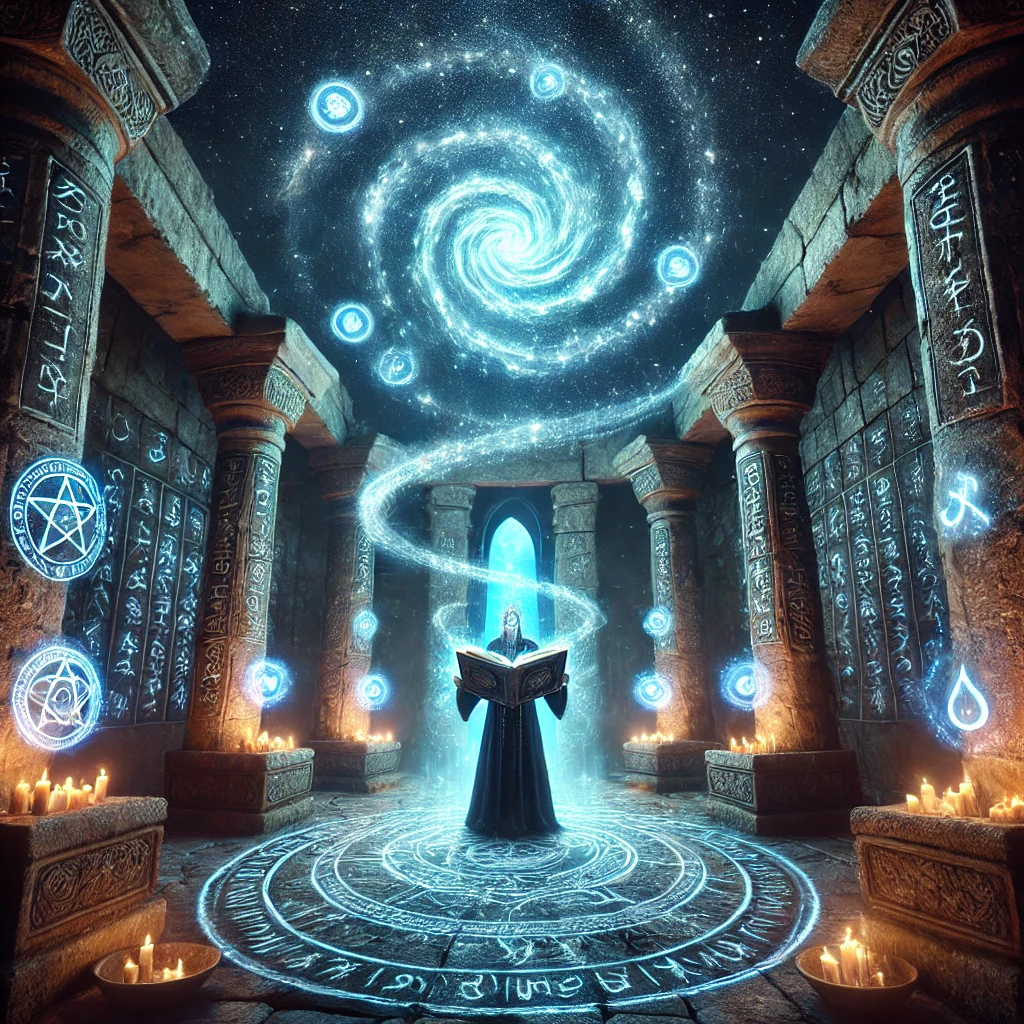
Responsibility and Safety in the Practice of Conjuring
The practice of conjuring requires not only technical knowledge, but also emotional and spiritual maturity. The power they carry must be treated with respect, understanding that each action generates consequences. True power lies in the wisdom of knowing when and how to use it.
Fundamental Ethical Principles
The practice of conjuring is anchored in an ethical basis that ensures its use is responsible and respectful. Among the main principles are:
The Law of Return:
- In the Wicca tradition Law of Three claims that everything we send returns in triplicate.
- The concept of karma, present in Eastern traditions, emphasizes the importance of conscious actions.
- The universal principle of cause and effect permeates various esoteric practices.
Essential Ethical Guidelines:
- Never conjure to manipulate the will of other people.
- Avoid practices aimed at causing harm or damage.
- Respect traditions and their teachings, without distorting them.
- Use magical power wisely, humbly and responsibly.
Psychological and Emotional Risks
The practice of conjuring can significantly impact mental and emotional well-being, especially for beginners. Some of the risks include:
Ritual Dependence:
- Obsession with immediate magical results.
- Excessive anxiety about the perfect execution of rituals.
- Emotional dependence on magical practices to make decisions.
- Loss of autonomy and difficulty trusting natural processes.
Emotional imbalances:
- Frustration at not achieving the expected results.
- Guilt over the unexpected consequences of rituals.
- Irrational fear of "negative energies".
- Paranoia about curses or spiritual attacks.
High-risk practices
Certain practices require additional precautions and are not recommended for beginners:
Dangerous Invocations:
- Performing invocation rituals without adequate protection.
- Trying to communicate with unknown or unreliable entities.
- Carrying out practices that induce altered states of consciousness without supervision.
- Taking part in rituals that require advanced knowledge without sufficient preparation.
Risky Energy Manipulations:
- Working with energies beyond the practitioner's capacity.
- Carrying out "cleansing" of heavy energies without proper training.
- Using dangerous elements such as fire or toxic substances without precautions.
- Interfering in other people's energy balance without consent.
Recommended safety measures
To ensure a safe and balanced practice, consider the following guidelines:
Adequate preparation:
- Study the practices thoroughly before carrying them out.
- Seek advice from experienced practitioners.
- Develop solid energy protection skills.
- Record your practices in a grimoire or magical diary for future learning.
Self-care:
- Perform energy cleanses regularly.
- Set clear boundaries for your magical work.
- Recognize when it is necessary to seek professional help, whether spiritual or psychological.
- Balance your mystical practice with the demands of everyday life.
Warning signs:
- Obsession with magical results.
- Social isolation due to practices.
- Constant fear of spiritual attacks.
- Excessive dependence on rituals to deal with life.
Practical recommendations
Start slowly:
- Start with simple practices, such as protection spells.
- Master the basics before exploring more advanced practices.
- Develop energy sensitivity gradually.
Maintain Balance:
- Balance your spiritual practices with everyday life.
- Cultivate healthy relationships and connections with the world around you.
- Keep a realistic perspective on the expected results.
Seek knowledge:
- Explore different traditions and their approaches.
- Learn from experienced practitioners and reliable sources.
- Keep up to date with safe and ethical practices.
The practice of conjuring is a powerful and transformative journey, but it requires responsibility, self-knowledge and respect for the forces invoked. By following ethical principles, recognizing risks and adopting safety measures, you can explore the world of conjuring in a safe and meaningful way, while cultivating deep and harmonious spiritual growth.
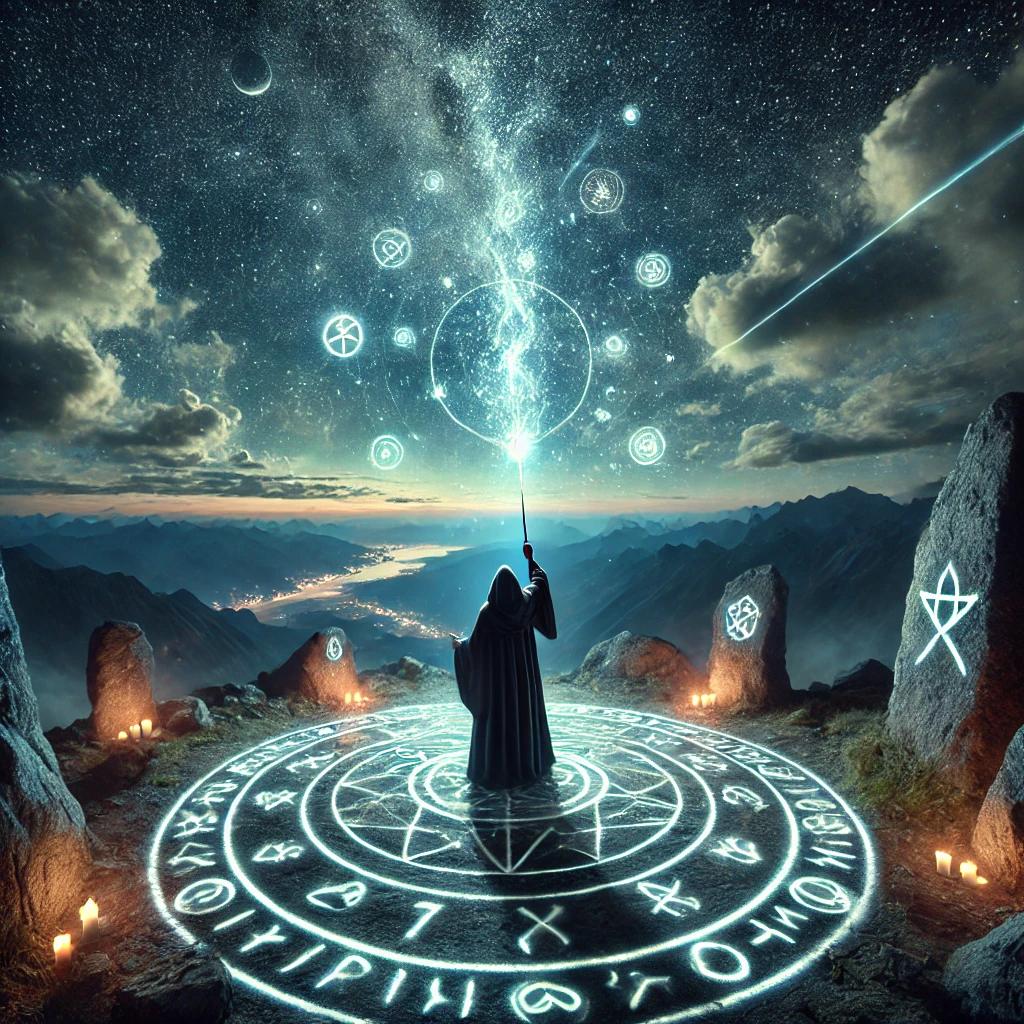
Ancient Conjures: Hidden Wisdom of the Ancients
Over the centuries, cultures all over the world have developed conjurations that are true windows into the wisdom and power of the ancients. These rituals, carefully preserved and passed on, were used for protection, healing, spiritual connection and transformation. Each conjure bears the marks of its origin, reflecting the beliefs, myths and needs of its time, but its essence remains relevant, connecting us to the universal energies and traditions that have shaped human spirituality.
The Charm of the Black Mirror
From the ancient Slavic tradition, used for protection against negative energies and clairvoyance.
Necessary elements:
- A black mirror or dark reflective surface.
- 3 black candles.
- Sea salt.
- Fennel.
Ideal time: During the waning moon, at midnight.
The ritual:
The ritual begins by arranging the candles in a triangle, with the mirror in the center. Salt is scattered in a circle around them. The words should be whispered while the fennel burns:
"In the depths of the black mirror
Where light and shadow meet
Let the veil be lifted
And protection descends like mist
Through this obsidian portal
May all negativity be absorbed and transmuted
How it was, how it is, how it will be."
The Song of the Three Sisters
Celtic conjure for healing and renewing vital energy.
Necessary elements:
- Three oak leaves.
- Natural spring water.
- A white ribbon.
- Artemisia.
Ideal time: At sunrise.
The ritual:
The leaves are arranged in the shape of a triskele (the Celtic symbol for three spirals), while the chanting takes place:
"For the first sister who weaves destiny
For the second that measures life
For the third one that cuts the wires
May my energy be renewed
May my strength be restored
May my spirit be healed
By the power of three times three
Thus it has been said, thus it shall be done."
The Seal of Hermes
Egyptian-Greek hermetic conjure for wisdom and mental protection.
Necessary elements:
- Papyrus or virgin paper.
- Paint made with myrrh.
- Frankincense.
- An ibis feather (or any white feather).
Ideal time: During the first quarter moon crescent.
The ritual:
The conjure should be written in a spiral, from the inside out, as you recite it:
"For the mysteries of Thoth
For the secrets of Hermes
By the wisdom of the holy scribes
May my mind be crystal clear
My thoughts protected like gold
And my wisdom as deep as the Nile
So I decree, so I manifest."
Ariadne's Labyrinth
Ancient Greek conjure to find paths and solutions.
Necessary elements:
- A red cord.
- Seven white stones.
- Lavender oil.
- A golden candle.
Ideal time: During twilight.
The ritual:
The stones are arranged in the shape of a labyrinth while the cord is interwoven between them. At each knot, it is recited:
"Through Ariadne's thread
Through the labyrinth
May the paths open up
Let the solutions reveal themselves
As light guides through darkness
Let the truth come out
And the way is lit."
The Dance of the Four Winds
Native American conjure for balance and harmony.
Necessary elements:
- Four different colored feathers (white, red, yellow and black).
- A drum or rattle.
- Land from four different places.
Ideal time: During the equinox.
The ritual:
The feathers are arranged on the four cardinal points and the earth is placed in the center. While the drum is playing, recite:
"By the north wind, which brings strength
By the south wind, which brings the heat
By the east wind that brings wisdom
By the west wind that brings renewal
May the four winds dance in harmony
And may balance be restored to my life."
The Circle of Avalon
Conjure from the British tradition for protection and spiritual connection.
Necessary elements:
- Nine white stones.
- An apple.
- Rainwater.
- A silver candle.
Ideal time: During the full moon.
The ritual:
The stones are arranged in a circle, with the apple in the center. Rainwater is sprinkled around them while they recite:
"By the sacred waters of Avalon
For the golden apples of the sacred island
May this circle be a portal of protection
May my connection with the divine be strengthened
As the moon reflects the sun, may I reflect the sacred light."
The Invocation of Ishtar
Mesopotamian conjure for love and fertility.
Necessary elements:
- Red rose petals.
- Mel.
- A pink candle.
- Myrrh incense.
Ideal time: During the crescent moon.
The ritual:
The petals are arranged in the shape of a star and honey is poured into the center. While lighting the candle, recite:
"Ishtar, goddess of love and fertility
For your power that blooms in spring
May my heart be filled with love
May my life be filled with blessings
As flowers bloom, may my destiny open up to happiness."
Important Notice
These conjures are part of ancient traditions and should be practiced with extreme respect and proper preparation. We recommend:
- In-depth study of the tradition of origin.
- Adequate energetic and mental preparation.
- Appropriate spiritual protection.
- Clear understanding of the consequences.
- Respect for ethical principles.
Conclusion
Throughout this article, we explore the rich tapestry of conjuring, from its ancestral roots to its adaptation in the modern era. We uncover the elements that make them unique, delve into their cultural traditions and reflect on how words, symbols and intentions can transform the mundane into the extraordinary.
Conjures are more than just magic words; they are a profound expression of the human desire to connect with greater forces and to shape reality itself. They represent our incessant search for meaning, balance and transformation, uniting spirituality and action in a unique and powerful way.
If this topic has piqued your curiosity, consider delving deeper into this fascinating universe. Explore books, join dedicated communities or seek guidance from experienced practitioners. Above all, practice responsibly, ethically and with respect for the traditions that keep this art alive.
The magic of conjuring is not just in the words or the rituals, but in the heart of the person who performs them, in the sincere intention to transform and create. May this journey inspire in you new possibilities and open up paths to the extraordinary.
I'm passionate about magic and spirituality, always looking for new knowledge about rituals, energies and the mystical universe. Here, I share magical practices and spiritual tips for those who want to connect more deeply with themselves and the world around them, all in a light and accessible way.


